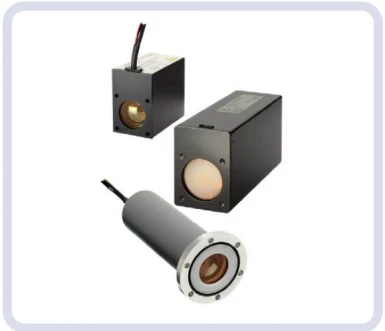Description
The PDM USB Series Photodetector Module represents a significant advancement in photodetection technology, offering enhanced performance and versatility for various applications. These modules are available in both cylindrical and rectangular formats, allowing for flexibility in integration and installation. With a choice between 25mm and 30mm diameter photomultiplier tubes (PMTs), the PDM USB Series is designed to meet the demands of precision light detection.
One of the standout features of the PDM USB Series is its ability to operate in three distinct counting modes: pre-set number of channels, pre-set total measurement period, or continuous mode. This adaptability ensures that the module can be tailored to specific experimental or operational requirements. Additionally, the modules are equipped with a facility for attaching a light fiber guide, further enhancing their usability in complex setups. The USB connectivity not only simplifies power management—eliminating the need for an external power supply—but also provides an intuitive interface for configuring operating voltage and threshold levels through the supplied software.
The PDM USB Series excels in dynamic range, with a sophisticated dead time correction mechanism that maintains accuracy even at high count rates. This correction ensures that the deviation from linearity remains within +5% at 100 million counts per second (Mcps), making it highly reliable for demanding applications. The modules are engineered with magnetic and electrostatic shielding to minimize interference, and they offer low noise operation, which is critical for achieving precise measurements. Moreover, the option for fiber coupling expands the module's applicability across a wide range of spectral ranges, enhancing its versatility in different environments.
Photodetector Module PDM04-9111-USB
Specifications
| PMT Type: | PMT (photomutiplier tube) |
|---|---|
| Wavelength Of Max Response: | 550 nm |
| Wavelength Range: | 280 – 630 nm |
| Rise Time: | 25 ns |
| Signal Count Rate Without Dead Time Correction: | 100 Mcps |
| Signal Count Rate With Dead Time Correction: | 100 Mcps |
| Discriminator Level: | 40 mV |
| Supply Voltage: | 5 V |
| Supply Current (@ 5V, No Signal): | 25 mA |
| Supply Current (@ 5V, Signal = 100Mcps): | 120 mA |
| Operating Voltage: | 5.5 V |
| Warm-up Time: | 1 s |
| Operating Temperature: | -40 to 55 °C |
| Storage Temperature: | -40 to 60 °C |
Features
- Easy Plug-and-Play Operation: Simply connect the photodetector module via USB for instant use without complicated setup.
- Wide Dynamic Range: Capable of handling a broad range of input signals, ensuring accuracy even at high count rates.
- No External Power Supply Required: Powered directly through the USB connector, eliminating the need for additional power sources.
- Magnetic and Electrostatic Shielding: Provides robust protection against external interference for reliable performance.
- Spectral Range Options: Choose from various spectral ranges to suit specific application needs.
- Low Noise: Designed to minimize noise, ensuring clear and accurate signal detection.
- Fibre Coupling Possible: Allows for the attachment of a light fibre guide for enhanced flexibility in light detection (guide not included).
- Software Configurable Counting Modes: Select from pre-set number of channels, pre-set total measurement period, or continuous mode via software.
- Adjustable Operating Voltage: Easily set the operating voltage through the supplied software for optimal performance.
- Threshold Level Setting: Customize the threshold level as needed using the software for precise control over detection sensitivity.
Applications
- Photon Counting Experiments: Ideal for research requiring precise light detection and counting.
- Fluorescence & Luminescence Studies: Suited for bioanalytical and chemical luminescence measurements.
- Nuclear & Particle Physics: Accurate detection of low-level light emissions in scientific experiments.
- Fiber-Optic Sensing: Compatible with fibre guides for remote or confined light sensing applications.
- Educational Laboratories: Perfect for teaching labs needing easy-to-use photodetection solutions.
Frequently Asked Questions
What is the Photodetector Module PDM04-9111-USB?
What are the features of the Photodetector Module PDM04-9111-USB?
What are the applications of the Photodetector Module PDM04-9111-USB?
Can the operating voltage be selected for the USB modules?
Is a light fibre guide included with the Photodetector Module PDM04-9111-USB?
Similar Products
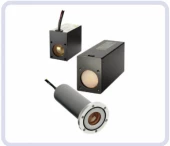
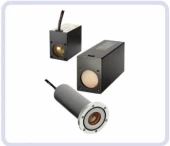
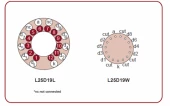
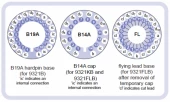
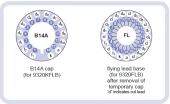
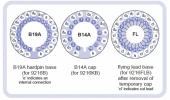






Your inquiry has been received.
Create an account by adding a password
Why create an account?
- Auto-complete inquiry forms
- View and manage all your past messages
- Save products to your favorites
- Close your account anytime — no hassle
